by California Casualty | Educators |
Going green is not just a slogan for some Washington State schools. They are doing their part to teach our children life-long lessons about sustainability and stewardship of the environment.
“Kids are very creative and once we get them involved, they carry the concept even further than we imagined,” said Laurie James, coordinator of the Green Ribbon Schools project at Discovery Elementary School in Everett, Washington. Discovery Elementary is a 2015 National Green Ribbon Schools honoree.
The U.S. Department of Education urges schools and school districts across the nation to build sustainable programs using three key pillars:
- Reduce environmental impacts and costs
- Improve the health and wellness of schools, students and staff
- Provide environmental education, which teaches many disciplines, especially in incorporating STEM, civic skills and green career pathways
Answering the challenge has resulted in schools that have reduced operating costs, which enabled administrators to dedicate more resources to instruction. It also promotes more student engagement and staff pride and productivity.
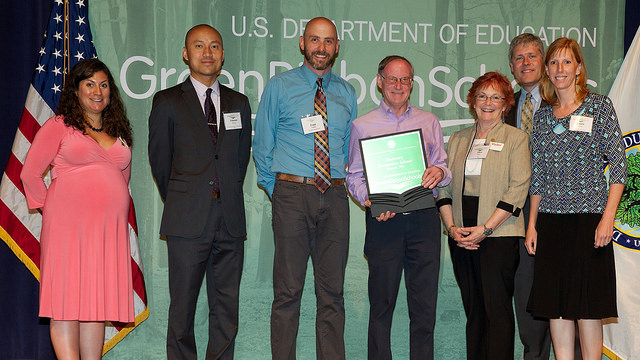
Discovery Elementary now has recycling and composting bins around the campus, a community garden and new fruit trees that produce a crop every year. The environmental message has been integrated into the curriculum, including health, science and math classes. Students create and build solar projects, set up bee hives, measure how much mulch and other organic material the garden will need, and learn about fresh foods and nutrition.

For Laurie James, it was more than just tackling a set of stated goals. “This has brought children from a variety of backgrounds together, building life-long lessons about sustainability and stewardship of the environment. The end result is not only children who have a new appreciation for how they can impact the future, but it also encourages family and community involvement.”
Another 2015 Washington Green Ribbon designee is Hillcrest Elementary School in Oak Harbor. Just like Discovery, the efforts at Hillcrest Elementary are student driven. There is a heavy emphasis on the garden; incorporating science, math and other curriculum. Students measure and design the best configuration for planting the gardens, and weigh, graph and calculate how much peat moss is needed to balance food scraps used in the compost bins. They also use real life marketing and accounting principles as they sell eggs from the chickens now raised at the school. Proceeds are donated to the local food bank.
Principal Paula Seaman said that being a Green Ribbon school has been a source of pride for the students and staff. “Other schools in our district are constantly visiting and working to set up a garden like ours,” she said. “We have been awarded more grants because of our designation…including $2,000 to enhance our garden. The award has united our community and students. They are committed to making Earth a better, safer and greener planet and know their contributions make a difference.”
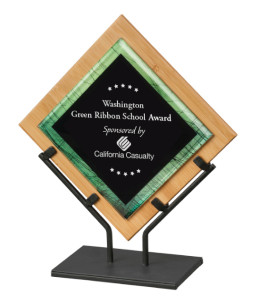
While achieving Green Ribbon School status is a great honor, there is a missing piece to the process. Each year, schools and districts that meet the stringent criteria are honored in Washington, D.C., but can only attend if they have the funds to make the trip. For many Washington State honorees, that can be a challenge.
Attending a program honoring the hard work of students, staff and the community shouldn’t be a burden. Seeing the need, California Casualty stepped in as the 2016 local sponsor of the Washington Green Ribbon Schools program, providing some travel and lodging expenses. As a long-time partner with the NEA Member Benefits in Washington, California Casualty is committed and honored to serve educators.
“Having this financial support takes the sting out of the cost of being recognized,” said James. “It will relieve the stress of fundraising and is one less hurdle to overcome in this important process.”
California Casualty congratulates the 2016 Green Ribbon award winners announced this Earth Day: Bethel and Issaquah School Districts, Columbia Crest A-STEM Academy (Ashford), Gaiser Middle School (Vancouver) and Lakota Middle School (Federal Way). We are proud to help support a program that benefits the environment and future generations of students while highlighting the best in Washington State schools.
by California Casualty | Safety |

Do you know anyone, other than an accountant, who really enjoys filing their tax returns? As if it isn’t stressful enough assembling all the documents, trying to decipher the forms and double checking the math, there is a new concern – tax fraud and identity theft. The IRS has noted a 400 percent surge in phishing and malware incidents this year, and the Treasury Inspector General estimates fraudulent returns will add up to $21 billion dollars in 2016.
Once again the IRS is warning that thousands of us are at risk. Most won’t find out until they file their taxes and get notified that someone has already used their Social Security number to claim a false refund. This will result in all kinds of headaches and delay their legitimate return.
Here are the top three of the IRS’s “Dirty Dozen” list of tax scams:
- Aggressive phone callers saying they are from the IRS threatening immediate arrest, deportation or license revocation unless you settle an outstanding balance via wire transfer or preloaded debit card
- Fake emails purporting to be from the IRS (or TurboTax) asking for “missing” personal information to secure your refund, or directing you to links that contain malware
- Fraudulent tax return preparers who use your personal information to perpetrate refund fraud, identity theft and other scams
To battle the problem, the IRS has published these tax-time security tips:
- Keep computers protected with strong passwords and strong virus/malware protection
- Avoid phishing scams: don’t respond to emails, tweets or phone calls asking for personal information or payment – the agency never initiates contact via phone, email, text or electronic media
- Don’t open attachments in emails unless you’re sure who sent it and why
- File returns early and do so electronically
- Choose your tax preparer carefully and ask if they have an IRS Preparer Tax Identification Number
- Never carry your Social Security card in your purse or wallet
If you receive a suspicious email message, the IRS asks that you forward it to them at [email protected]. They ask that you report IRS-impersonation calls at www.tigta.gov
While the IRS has instituted new programs and resources to try and prevent tax ID theft, they warn that crooks continue to find new, more sophisticated ways to capitalize on our money. That’s why they have a comprehensive list of information about tax-time identity theft and helpful links at https://www.irs.gov/uac/Identity-Protection.
These are signs that you could be a victim of tax-related identity theft:
- More than one tax return was filed using your SSN
- You are notified you owe additional tax, have a refund offset or had collection actions taken against you for a year you did not file a tax return
- IRS records indicate you received wages or other income from an employer you never worked for
And, if it happens to you it can be costly in both time and money. A Bureau of Justice Statistics survey found the average loss per ID theft victim was $1,343, and most spent at least a full day to clear up the issue, however some didn’t see a resolution for months.
Nobody has time for that. That’s why California Casualty provides free ID theft protection with every auto and home insurance policy. Through our partners at IDT911, not only is your identity and personal information protected, but you’ll work with a resolution specialist in case of:
- Tax Fraud
- Social Media Compromise
- Email Compromise
- Child Identity Theft
- Break-in Recovery
- Travel Identity Theft
- Much More
Contact a California Casualty advisor today for a free auto and home insurance policy review and learn about our free ID theft protection at 1.800.800.9410 or visit www.calcas.com/identity-theft.
Sources for this article:
https://www.irs.gov/uac/Newsroom/Consumers-Warned-of-New-Surge-in-IRS-Email-Schemes-during-2016-Tax-Season-Tax-Industry-Also-Targeted
https://www.irs.gov/pub/irs-pdf/p4524.pdf
https://www.irs.gov/uac/Newsroom/IRS-Wraps-Up-the-Dirty-Dozen-List-of-Tax-Scams-for-2016
https://www.consumer.ftc.gov/articles/0008-tax-related-identity-theft
https://www.bjs.gov/content/pub/pdf/vit14.pdf
by California Casualty | Educators |

How do you start the first 10 minutes of your class? Roll call after the bell in the morning? Listing an agenda for what’s to come for the day, or recapping what happened the day before? What if you took an approach that was outside of the box? Imagine giving children positive feedback that might carry them through the day and help them treat others better.”
A Florida teacher is making headlines for shedding light on bullying, and teaching his students how they can make a change. During the first 10 minutes of every class, he compliments each student one-on-one as they come to the front of the class. He gives them affirming messages such as, “Everyone here loves you,” “I love having you in class,” or “You’re great at sports.”
Research show most bullying occurs in middle school (Grades 6, 7, and 8). This could leave kids with a lasting impression which might affect them later in life. Addressing the issue and involving the class in thinking positively can have a long-lasting impact
According to Education World, you need to be cautious on how to phrase positive compliments. Instead of saying “You’re excellent at…,” focus on how hard they are trying. A couple examples are: “I like watching you work so hard at learning. It means a lot to me that you don’t give up,” or “I appreciate how helpful you have been today.”
In other words, praise them for their effort, not for their expertise.
Next time your student does make a mistake, they will see your praise as being genuine, and not feel like they are not good enough. Experts say try and use compliments sparingly to reinforce activities, otherwise you may encourage a child that only works hard for praise, not for doing their best at a task.
Sources:
https://abcnews.go.com/Lifestyle/florida-teacher-starts-day-complimenting-students/story?id=35259600
https://www.bullyingstatistics.org/content/school-bullying.html
https://www.educationworld.com/a_curr/effective-praise-compliments-students.shtml
by California Casualty | Safety |
You’re driving along, paying attention to the traffic around you when suddenly a sight catches your eyes. Could that be what it seems to be? You look again and yes, it’s an electric road sign with a catchy or humorous message.
April is National Distracted Driving Awareness Month. In 2014, more than 3,100 people died and 431,000 were injured in motor vehicle crashes involving distracted drivers. Research finds drivers 15-19 years old were involved in the greatest number of distracted driving crashes, but more and more adults are also using technology behind the wheel.
While it’s a serious problem, some states are using funny or out-of-the-box messaging to discourage dangerous and distracted driving.
If you haven’t seen them, take a look below.
Iowa has been very active in alternative messages to help drivers pay attention:
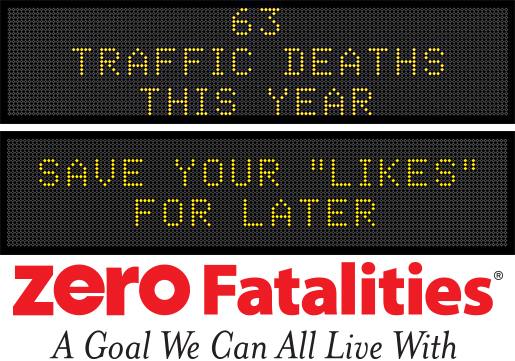
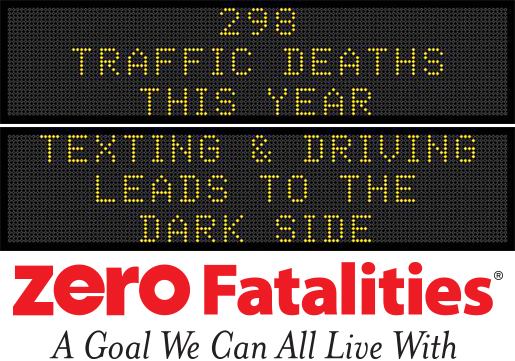
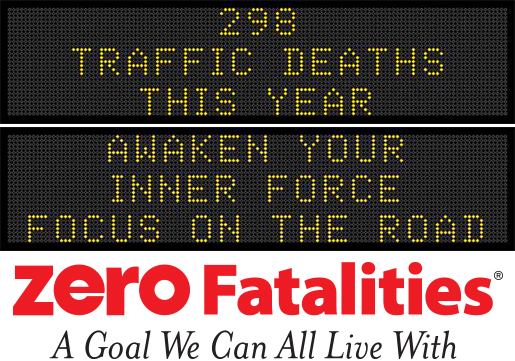
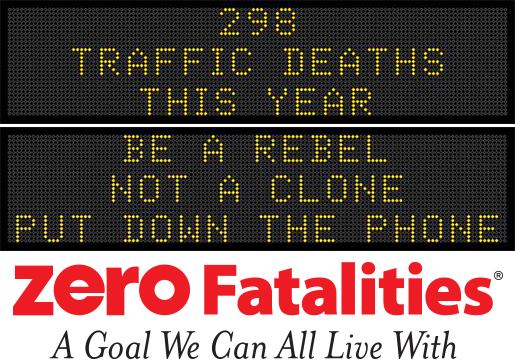
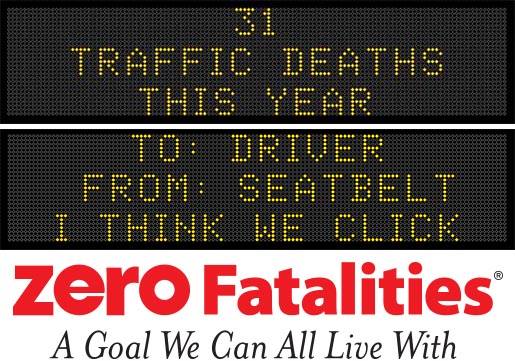
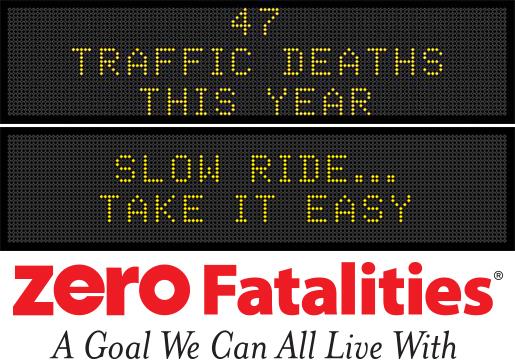
Arizona is also known for their pop-culture messaging to dissuade drivers from choosing the wrong path behind the wheel:
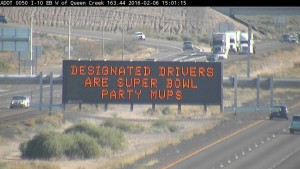
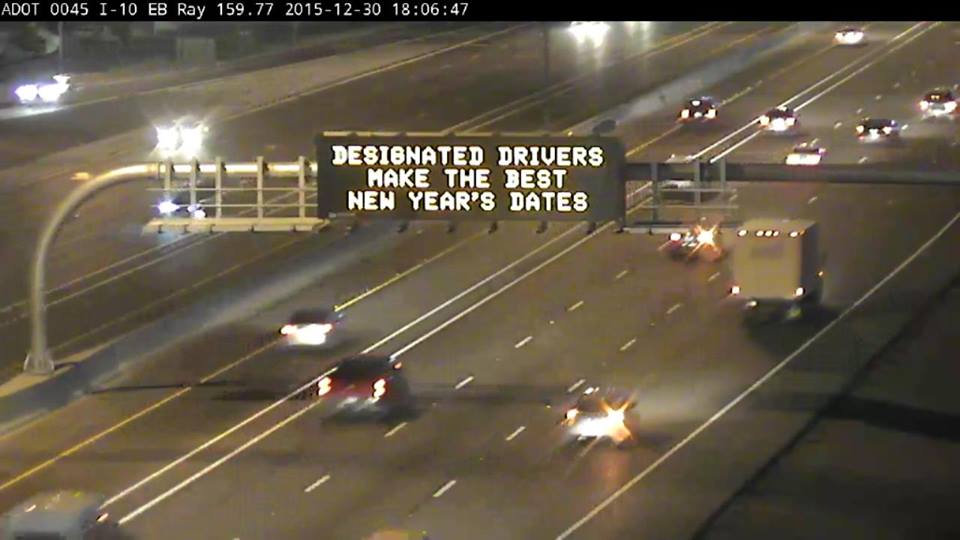
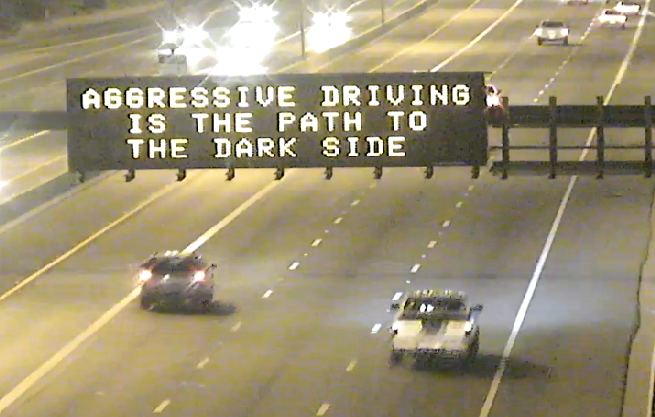
The Massachusetts Department of Transportation has also used some eye-catching signs:

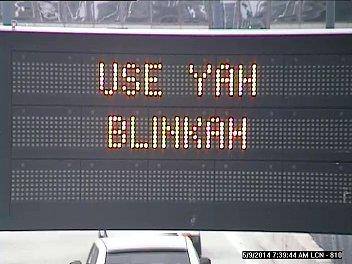
Even Utah is resorting to some off-the-wall signs, inviting the public to submit messages for their “Message Monday” program, which has produced:
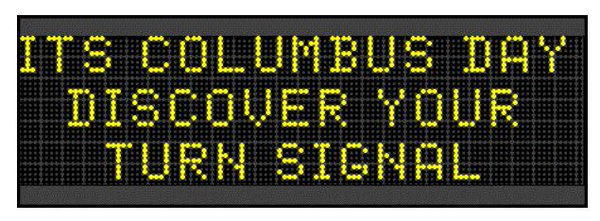
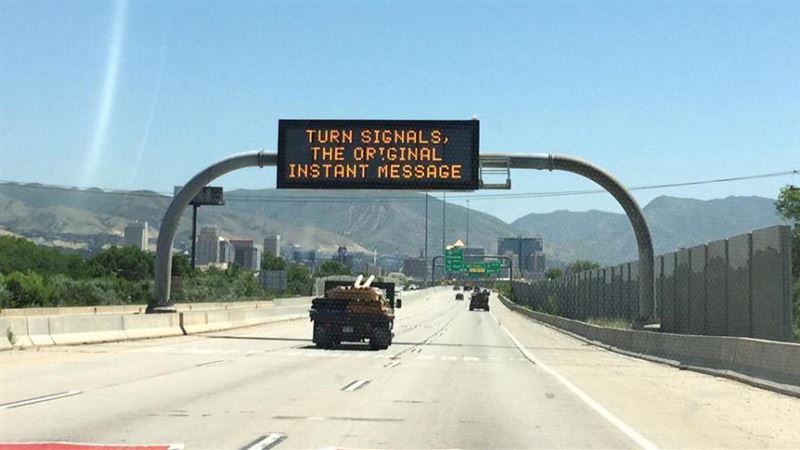
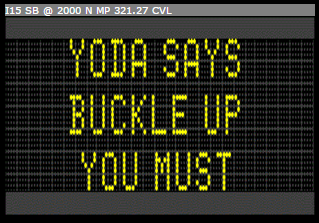
While there is some debate on how well the funny signs work, they are making safe driving a much talked about issue, often shared on social media.
Distracted driving is a real and deadly problem. Reading an average text takes your eyes off the road for 5 seconds. If you are driving 55 miles per hour, that’s like traveling the length of a football field blindfolded.
That’s why it’s imperative that drivers:
- Not text while driving
- Prevent passengers from loud or distracting behavior
- Avoid using cell phones while driving
- Don’t eat or drink behind the wheel
- Be aware that navigation devices and other electronic devices can cause dangerous distractions to drivers
- Wear seat belts, obey traffic laws and keep alert to traffic around them
California Casualty is committed to preventing distracted driving. We’re a founding member and continued partner of the Impact Teen Drivers program that provides proactive, peer-to-peer messaging and education about the dangers of distracted driving. Learn more about the effort at www.impactteendrivers.org.
California Casualty can also protect you from distracted drivers. Contact one of our advisors today to make sure your auto insurance is up-to-date at 1.800.800.9410 or visit www.calcas.com.
by California Casualty | Nominate a Hero |
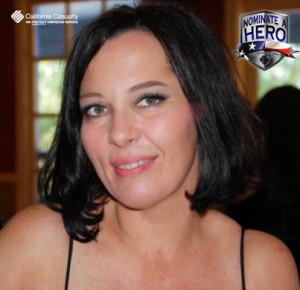 Christa is one of many that give the real definition of a hero. She has been a nurse for many years and works in pediatrics. Her unique story starts with social media. Christa turned a curse into a blessing, not only for herself but for a young lady too. After a falling through with the first attempt at donating , She was searching for a new kidney . Due to illness, the young lady was taken off the list.
Christa is one of many that give the real definition of a hero. She has been a nurse for many years and works in pediatrics. Her unique story starts with social media. Christa turned a curse into a blessing, not only for herself but for a young lady too. After a falling through with the first attempt at donating , She was searching for a new kidney . Due to illness, the young lady was taken off the list.
Ironically, Christa was not just a perfect match, but in fact the only match in the country. Christa had recently survived a house fire and car wreck. She decided to become an altruistic donor in hopes that the donation chain would save more lives. Since Christa was a match, she chose to donate her kidney.
Beyond a remarkable story, Christa is a mother of two, and grandma (also known as “Ya Ya”) of a seven-year-old. Christa knows American Sign Language, learning Spanish, and teaching both to her granddaughter.




















